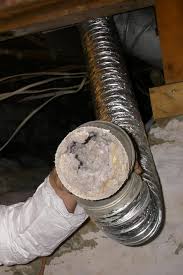 Invermere home inspection services Invermere home inspection services Building codes vary from region to region (with amendments) and not all the jurisdictions follow the ICC or adopt ICC codes at the same time. In most cases they all basically include the same restrictions. Some codes have been found to be less restrictive. Many of them concur that the exception to the 35-foot minimum run length is when the appliance manufacturer's installation instructions specify maximum lengths with particular models. In this case, the make, model and installation instructions need to be provided to the building inspector and sometimes a permanently mounted sign or placard is placed behind the dryer identifying the overall length of the exhaust duct and the respective model that the house was approved with. A summary of the typical codes relating the dryer venting is as follows: Dryer vent systems shall be independent of all other systems and shall convey the moisture to the outdoors. Terminations shall be a minimum of three feet from property line and 12" above the ground and not exhibit any type of screen. Vents and duct connections shall be connected mechanically (with sheet-metal screws or rivets) and shall not protrude more than 1/8" into vent. Exhaust vents shall be equipped with a back-draft damper and no screen. Vents shall be constructed of minimum 0.016-inch-thick (0.406 mm) rigid metal ducts, having smooth interior surfaces with joints running in the direction of air flow and having a minimum interior diameter of 4". Flexible duct shall not be concealed within the construction. The maximum length of a 4-inch (102 mm) diameter exhaust vent shall not exceed 35 feet (7620 mm) from the dryer location to wall or roof termination and shall terminate with a full opening exhaust hood. A reduction in maximum length of 2.5 feet for each 45-degree bend and 5 feet for each 90-degree bend shall apply. Installations where this length is exceeded shall be installed in accordance with the manufacturer's installation instructions.
0 Comments
Leave a Reply. |
Archives
January 2024
Categories |
 RSS Feed
RSS Feed